By Xiao Jian, Senior Strategy Director of Alibaba Cloud Research Center
Edited by Zhang Nan, from Alibaba Cloud Research Center
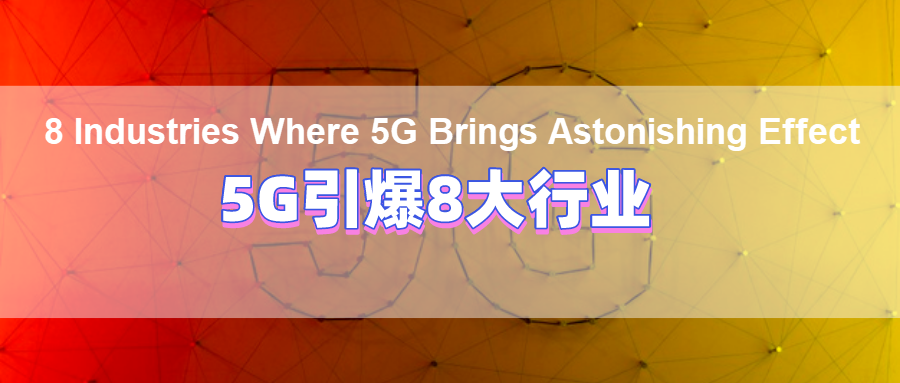
5G technology is particularly valuable when implemented in "intelligent economy" scenarios. In this blog, we'll uncover 8 industries in which 5G technology would play a vital role their development, and discuss the opportunities and challenges of 5G implementation.
The maturity and efficacy of 5G varies a lot across different industries. With regular changes and uncertainty today, "New Infrastructure" with 5G will not only provide a carrier for informatization, digitalization, and intelligence, but also give birth to new business forms and development models.
Alibaba believes that the four major general applications that 5G brings direct changes to are: visual acuity, ultimate experience, cloud-device integration, and on-site enhancement. Based on the implementation of 5G, we analyzed in detail the maturity of 5G applications and the fields where 5G applications have been implemented in various industries.
As the driving force for stimulating the national economic development in the post-epidemic era, 5G construction has been accelerated and more expectations are given to this innovative technology. Individuals from all walks of life have been discussing the applications of 5G in depth, and the media also continuously report on various application pilots and publicity. However, it is necessary to have a clear understanding of the actual situation of 5G applications in industries in the future. It is worth mentioning that the construction and development of 5G and its impact on businesses is a continual and long-term process.
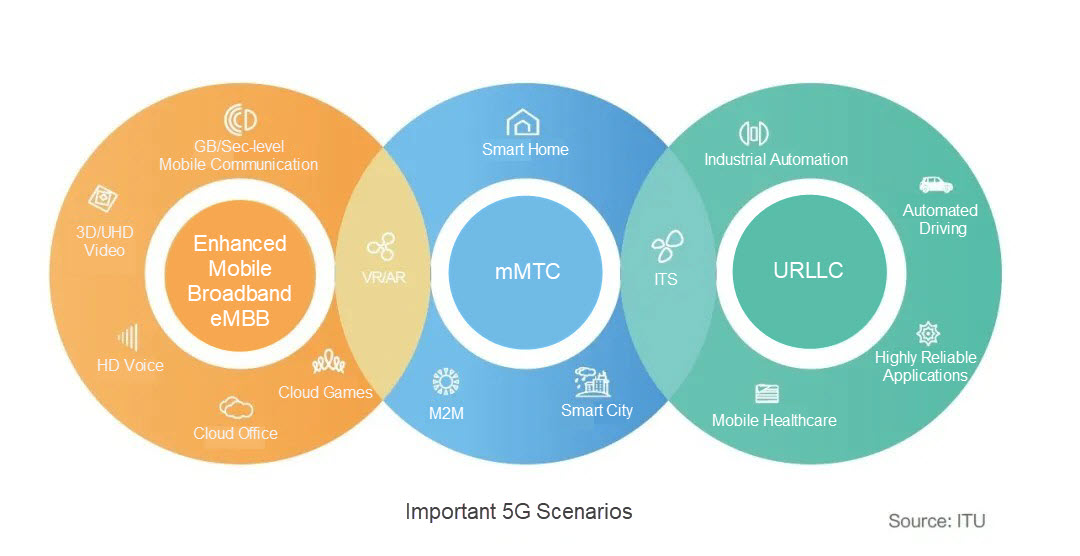
5G application scenarios are closely related to the main technical features of 5G. From the perspective of the application scenarios released by ITU, these scenarios include:
In terms of the division of application scenarios, we propose a "4 + X" system by referring to that of IMT2020 (5G popularization group).
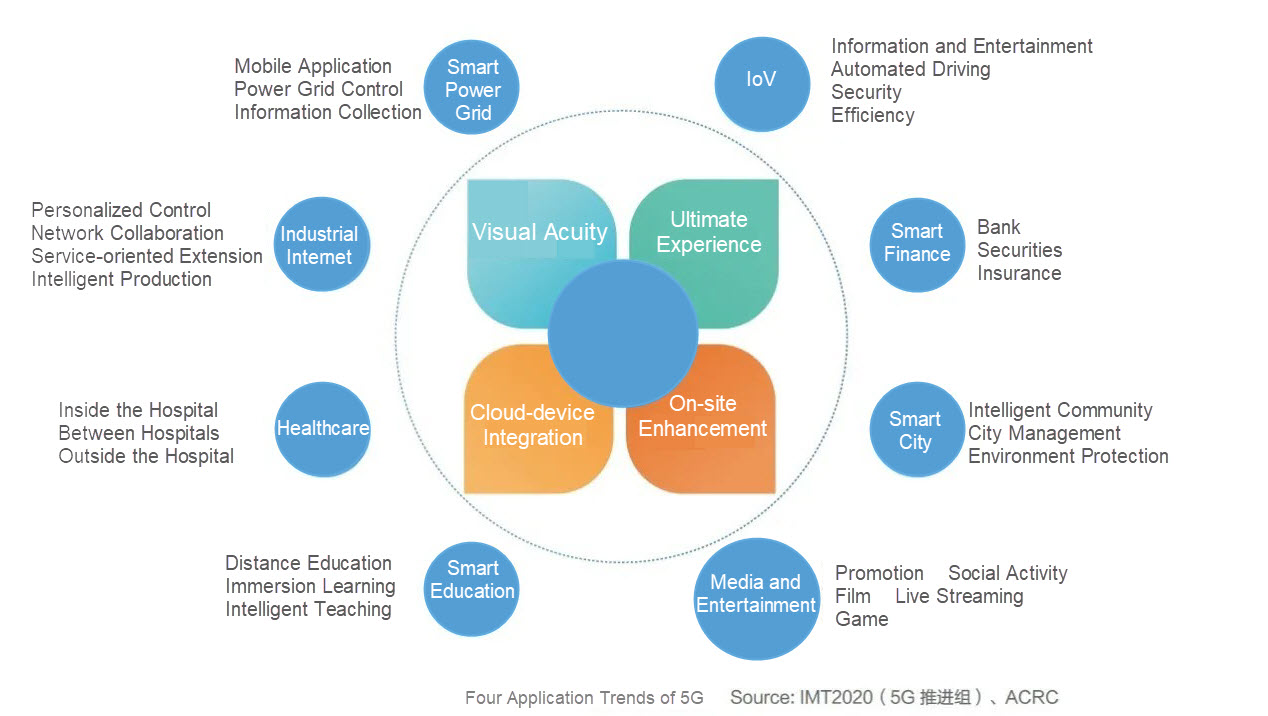
4K UHD Video is one of the most typical application areas in 5G era, which is expected to be the first blockbuster. According to CCID prediction, China's UHD video market size will exceed 2.5 trillion RMB in 2022. Coupled with other applications in various industries, the overall market size is expected to be up to about 4 trillion RMB. Excluding 5G + 4K/8K and 5G + VR, UHD video also plays an important role in various scenarios, such as smart healthcare, security, and education. 5G has promoted the improvement and acuity of visual resolution. It also brings positive impacts to all aspects of the industry chain closely related to the video services, including videos, media, entertainment, games, 4K terminals, chips, video cloud computing, and CDN. Typical application cases are also notable, such as 5G + 4K live broadcast of the construction of Leishenshan Hospital and Huoshenshan Hospital during the epidemic, as well as 5G live broadcast of China Dragon Boat Race in Fuzhou and 5G HD live broadcast of a community theater in Shenzhen.
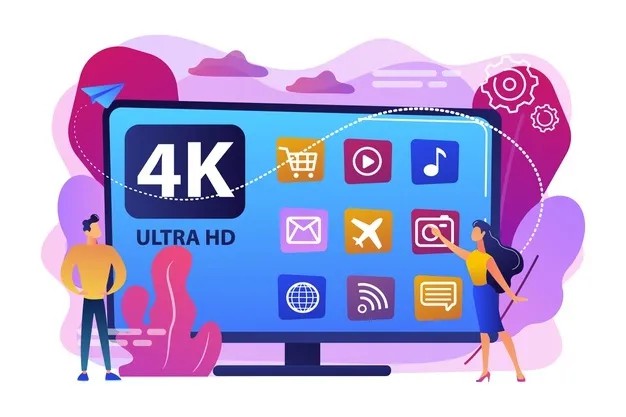
5G can provide more flexible and large-capacity channels for VR/AR content collection and transmission. It can also maintain the constant connection between the terminal devices and the cloud to reduce VR visual delay. Moreover, it can transfer computing power to the cloud, eliminating the burden of computing modules for VR/AR helmets, and meeting lightweight requirements. In addition, cloud games are expected to gradually become popular with improved game experience, attributed to the collaboration of computing power. Typical application cases include 5G + 8K + VR live broadcast of CCTV Spring Festival Gala in 2020, 5G + VR live broadcast of the National Farmers' Harvest Festival in 2019, "Jump VR" Zoo launched by South Korea's SKT, and various AR cloud games. However, it should be noted that, VR/AR technology is still under development now, among which game and entertainment are known as the most important areas of VR/AR implementation. Further development of VR/AR still needs continuous breakthroughs and innovations. By now, most VR/AR applications combined with 5G in China basically stay at the promotion and demonstration stage, and regular and large-scale development of these applications in the industry still needs time.
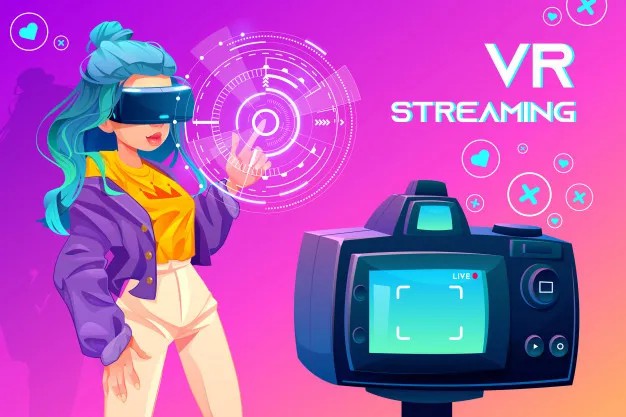
5G has promoted HD video development for personal terminal devices and enriched applications such as entertainment and games. As a result, computing and storage requirements for personal terminal devices have greatly increased. Edge Computing alone cannot meet users' demands. Thus, the 5G scale construction will shift the terminal computing power to the cloud. From the computing perspective, cloud-device integration and cloud-device collaboration will become part of our daily life. In the near future, with enhanced coverage of 5G network, the connection between personal terminal devices such as mobile phones, PAD, and wearable devices will integrate with the cloud. Through the combination of the super computing power in the cloud and the terminal edge computing, storage requirements of large amounts of data can be met. Cloud computing will be provided not only to business-side enterprise users in the future, but also to a vast number of customer-side individual users. The cloud and terminal devices will be more closely integrated.
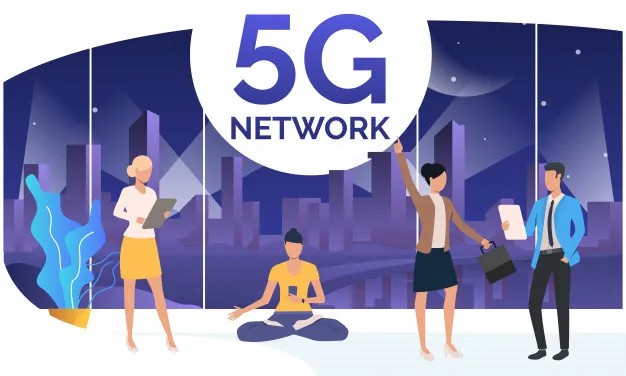
The promotion and construction of 5G may change most industries in the future. If applied in various industries, 5G, combined with other industrial technologies, will enhance on-site operation efficiency. For city/community intelligence including IoT-based smart security, intelligent identification, and intelligent management, AR and AI inspection of factory assembly line and precision manufacturing, AI-assisted diagnosis and treatment of smart hospital, and completely online information and entertainment of automobile in the future is completely online, and 5G will comprehensively improve on-site operation efficiency. In addition, due to the large connection and high speed characteristics of 5G, field job data can be transmitted to the back-end platform in real time at the same time, not only can data mining can be conducted to enhance business value. These data can also be connected to third-party data to maximize the value of traditional on-site operations through data interaction.
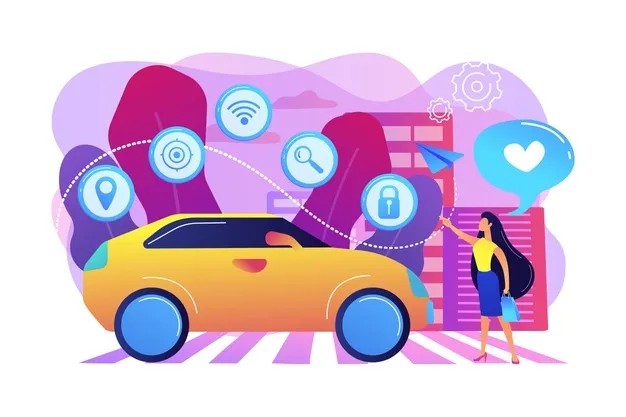
There is no unified division standard for 5G industrial applications. We referred to the application scenarios of 5G divided by different organizations and agencies. Considering Alibaba's understanding and practices of the industry digitalization, we analyze the service maturity and application relevance of 5G in different industries and fields from the industry perspective. In the following part, we will introduce major industrial application scenarios of 5G.
In the long run, "5G + Industrial Internet" will become the next-generation emerging formats and application modes for deeply integrated information and communication technologies and advanced manufacturing industries. "5G-ACIA" (The 5G Alliance for Connected Industries and Automation) was formally established in ZVEI in the middle 2018, aiming to promote the implementation of 5G in industrial production. 5G-ACIA members include traditional automation and manufacturing enterprises, such as Bosch, Siemens, ABB, and Mitsubishi. Leading enterprises in the information and communication technology industry, such as DT, Vodafone, and China Mobile, are also included. Although wireless connections account for only about 10% of current industrial communication connections, it will be rapidly developed in the next few years. It is estimated that the proportion of wireless connections will reach 58% by 2026, and 5G will play an important role during the development process. Most of the current 5G industrial applications focus on auxiliary features, such as 5G-based remote monitoring, AR assembly assistance, and O&M and inspection assistance. Besides, vision-based photographic inspection, such as engine quality inspection, industrial cameras and edge computing gateways with built-in 5G communication modules in the production line, can realize mobile measurement and roadside detection. Compared with advanced quality inspection, traditional production quality inspection methods depend on manual operations and experience, resulting in low efficiency and accuracy. It's also worth noting that 5G wireless connections in industrial side are crucial, as narrowband short-range wireless technologies, such as Wi-Fi, Bluetooth, and Zigbee, are widely used in factories. Additionally, the development of Industrial Internet is still in its infancy. The industry is expected to enter the stage of full interconnection and independent intelligence between 2025 and 2030, which means the scale application of 5G in industry still needs a long time.
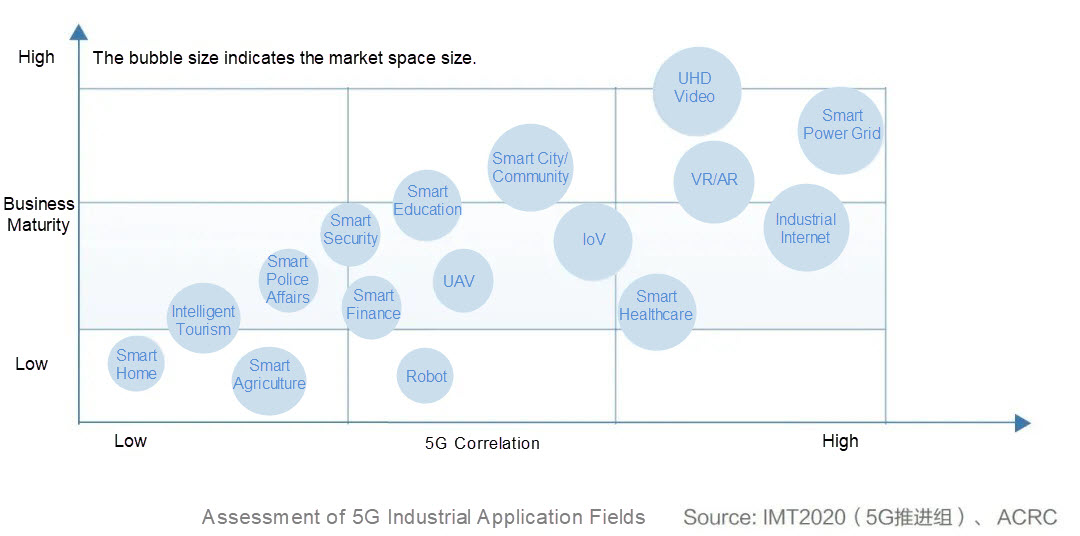
Compared with other industries, the power industry requires relatively high intelligence. According to industry statistics, 90% of the blackout occurred in the last 5 kilometers, partly resulting from relatively low distribution automation. Thus, the National Energy Administration requires the automation rate to reach 90% at the end of the 13th Five-Year Plan. Due to China's vast territory, there are many node devices for power distribution protection and control in the power grid. It's impossible for all devices to realize two-way information interaction only through optical fiber, and the construction cost and cycle are also unacceptable. Therefore, the low latency and large connection capabilities of 5G can be utilized. 5G can be combined with optical fiber to control node devices both on the power distribution and consumption sides in a wider area. By doing so, the comprehensive grid automation can be realized. In addition, in the backbone line inspection of the power grid, the combination of UAVs, unmanned vehicles, and robots + 5G will greatly improve the inspection efficiency in remote areas and reduce labor costs. With the wide popularization of smart meters, data return and control on the meter side can also be combined with 5G. By utilizing advantages of 5G in the IoT field, grid enterprises can switch massive existing data upload procedures based on GSM narrowband network to NB-IoT based on 5G. This, further power consumption reduction and precise control can be achieved.
The combination of 5G and the power grid is expected to have bigger development opportunities in the future. On one hand, there are more market demands. On the other hand, those state-owned behemoths with abundant capital, like the State Grid Corporation of China, are willing to participate in the 5G field that has extremely high financial and professional requirements.
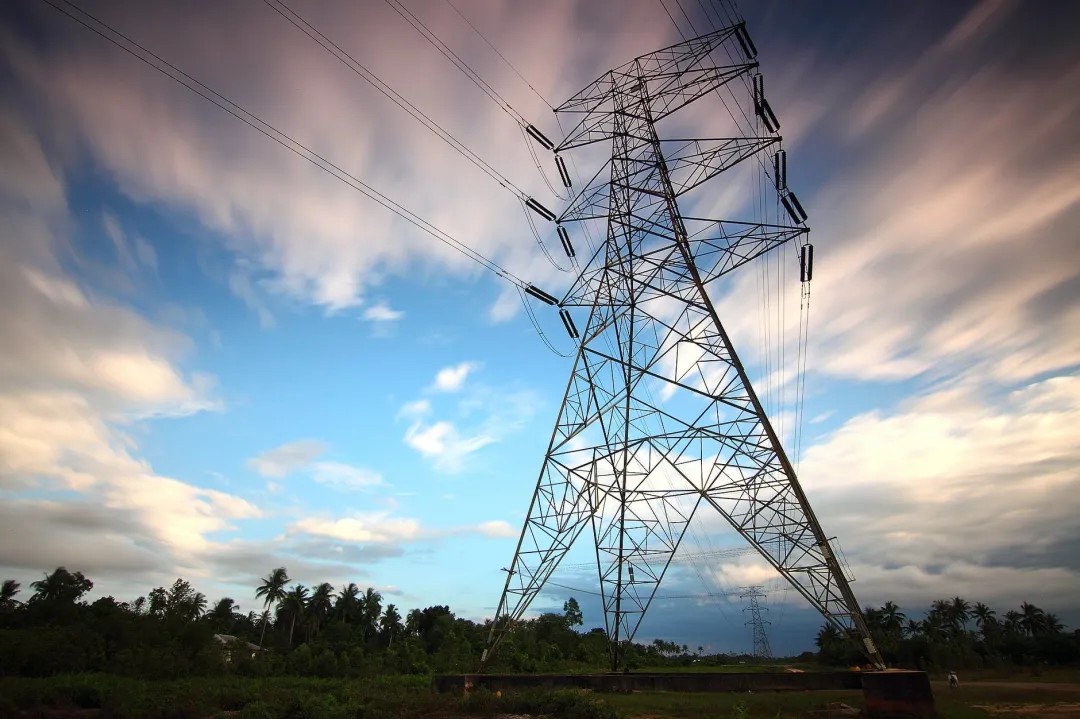
IoV is widely regarded as the top priority for IoT in vertical industries, which will be further promoted in the 5G era. With richer industrial chain, the vehicle-road collaboration and vehicle-vehicle collaboration scenarios based on 5G ultra-low latency will become a reality. In the future, automated driving will no longer be limited to single-vehicle intelligence, but will be extended to vehicle-vehicle and vehicle-road intelligent collaboration. The typical application scenarios of 5G in IoV mainly include the application of AR navigation, fatigue driving reminding, and real-time road condition/navigation. They are derived from vehicle-mounted information and entertainment through integration with voice interaction, AR, visual recognition and other technologies. No matter where cars goes, the applications are always in online mode. The 5G-based automatic collision warning and the vehicle-vehicle and vehicle-road intelligent collaboration are still at the exploration stage. It should be noted that the 5G-based information and entertainment applications of IoV will be the first to mature, while there is still a long way to go for vehicle-road collaborative automated driving under all road conditions. Currently, what 5G can do is mainly to provide experiment scenarios.
According to IDC, it is expected that by 2023, the market size of China's video surveillance equipment (excluding home video surveillance) will reach 20.1 billion US dollars, with an annual compound growth rate of 13.6%. For video surveillance, 5G will be mainly applied in cameras of wireless and movable scenarios, and high bandwidth and low latency of 5G can return any single-point video image in real time. Security inspection in movable scenarios will become an important supplement to routine monitoring. In addition, 5G-based IoT security applications will gradually become part of our daily life in the future. One typical application case is the 5G patrol robot launched in the 6th Light of the Internet Expo. Through 6 high-definition cameras carried, it provides all-round HD video surveillance data for vehicle identification, remote calling, broadcast reminding, and hazard source detection. Besides, typical application scenarios of 5G security also include IoT applications, such as smart inspection, door/window inspection, and home security. To be more specific, security robot inspection in major occasions, access control sensing, and automatic alarm of smoke and water sensation in dangerous unmanned areas are cases in point. Apart from HD video return, the main applications of 5G-based security IoT are still mainly narrowband. As NB-IoT has been incorporated into the 5G standard, the concept of 5G-based smart security has been generalized.
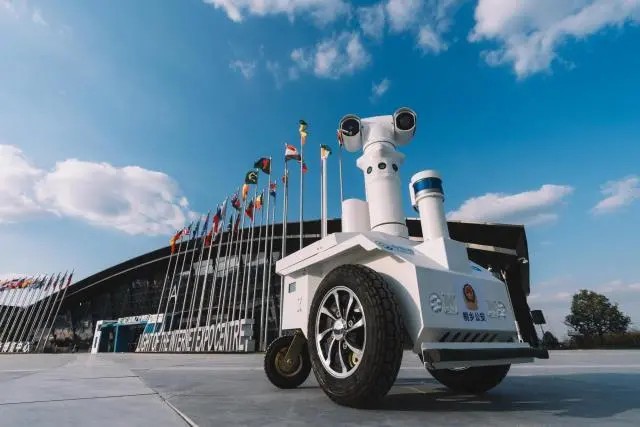
5G Patrol Robot During the 6th Light of the Internet Expo (Provided by the Beijing News and Tongxiang Public Security Bureau)
The epidemic prevention and control makes community management an important topic for local governments. The combination of community management and 5G is mainly reflected in digital community, whose infrastructure covers intelligent IoT equipments and communication network equipment. By constructing 5G wireless network and IoT, the general ecosystem of intelligent community is established, depending on community service and intelligent community service platforms. Typical application scenarios include automatic street lamp control, fault monitoring and alarm, intelligent community passage, greening irrigation monitoring, trash status monitoring, intelligent fire protection system, intelligent parking monitoring, and community security monitoring. It should be noted that the strong correlation between smart community and 5G is still based on IoT. In addition to few HD video applications, a large number of intelligent management aids in the community are implemented through IoT.
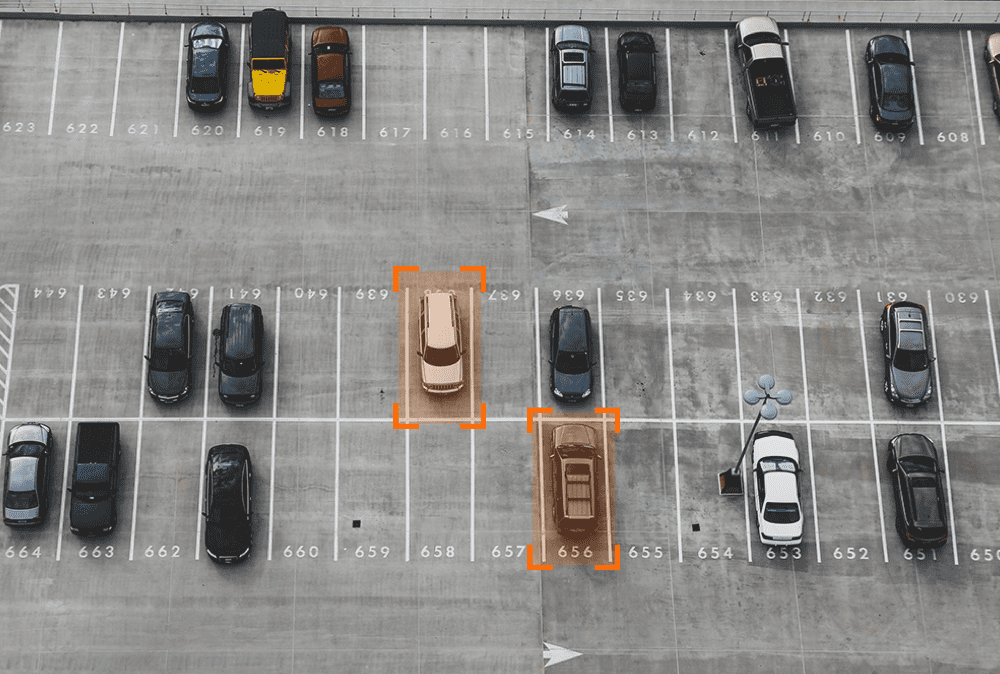
The combination of 5G and medical treatment is currently under the spotlight. On one hand, because of the epidemic, the importance of the medical system is more prominent than before, as well as a series of former promotion of "Healthy China" strategy. On the other hand, the uneven distribution of medical resources in China leads to the difficulty in medical treatment. So, all local governments expect to empower the medical and health industry and solve or alleviate medical and livelihood problems, through cloud computing, big data, IoT and 5G. Today, 5G is likely to play a significant role in pushing forward the implementation of China's hierarchical medical system and medical treatment alliance, and greatly improving the medical treatment level of primary hospitals. For example, by cooperating with major hospitals, the knowledge and experience of experts and massive high-quality data of electronic medical records can be used. Thus, the model and application of AI-assisted disease diagnosis based on expert system and machine learning can be established. By doing so, the diagnosis and treatment level of ordinary doctors in primary hospitals can be greatly improve. In addition, 5G network can also be used in distance surgery under emergency situations. In 2019, the world's first orthopedic surgery robots appeared in Beijing Jishuitan Hospital. By applying 5G technology, experts remotely controlled these robots to perform distance surgery for patients in hospitals in different regions. It should be noted that the deep integration of 5G and medical industry still requires a long time of explorations and practices. "Smart Healthcare" has been piloted in some grade III level A hospitals and some medical treatment and service alliances. 5G network coverage in medical industry is still in progress, and "Smart Healthcare" is currently more based on technologies like cloud computing, big data, and AI. By combining with patient information, "Smart Healthcare" accurately matches medical resources and improves the level of diagnosis and treatment. Moreover, the subsequent combination of 5G network and "Smart Healthcare" can optimize the patient management and improve the whole process experience of patients before, during and after their hospitalization.

During the epidemic, the online home learning mode of all students has accelerated the popularization of online education. The combination of 5G and education applications is still based on ultra-wideband and ultra-high reliable 5G network currently. 5G will promote the education industry in distance teaching effect, teaching intelligence, teaching innovation and teaching network coverage. To truly realize smart education, 5G is only one of the means, and it also needs to combine cloud computing, AI, CDN, and other digital infrastructures. The applications of information technology in education can usually be divided into three stages: the change of tools and technology, the change of teaching mode, and the change of school form. Currently, these applications mainly concentrated in the first two stages. Similarly, 5G also plays a major role in distance education and video education. It should be noted that distance education itself is not a new concept. The wireless distance education is resulted from special situations. Most online education uses WIFI and fixed optical fiber networks. 5G traffics are too expensive for non-profit schools, which makes it difficult for operators to promote the 5G Smart Campus Solutions in major schools. As a result, in education field, the implementation of 5G is relatively slow, especially on the school side.

The combination of the media industry and wireless communication began from the 4G era. Due to the low speed of the 4G network, 4G-based live video cameras are not popular. However, 4G cameras, combined with intelligent marking and editing of cloud platform, has been applied in traditional TV stations to some extent. This application scenario has been further deepened in the 5G era. Based on the high speed and low latency of 5G network, the live videos collected in real time by professional 5G/VR live broadcast cameras are uploaded to the video cloud platform through 5G. Then, the video content can be marked and encoded, which is then transmitted to the network through the transmission server. Finally, they are distributed to the user terminal devices through CDN. This provides users with an immersive experience based on the Internet.

Even though based on traditional TV network media, 5G also improves live broadcast efficiency for live news collection. Today, the timelines requirement of news is much higher, which means the traditional camera with hard disk for local storage is likely to change rapidly. 5G will bring great changes to professional media cameras. We can predict that more and more live news broadcast scenarios will integrate 5G slicing technology in the future. For traditional TV media, where video is the main carrier, 5G provides faster popularity of UHD video (4K and 8K) and greater convenience for live video collection and transmission. This is the in-depth combination of industry demands and technology developments. So, the combination of TV stations and 5G industrial applications will be faster than that in other industries.
Function Compute Tutorials that You'll Not Want to Miss - Part 1
Container Service for Kubernetes (ACK): A Fully Managed Service on Alibaba Cloud

2,599 posts | 765 followers
FollowAlibaba Clouder - October 9, 2020
Alibaba Clouder - July 13, 2018
Alibaba Developer - July 9, 2021
Alibaba Clouder - November 26, 2018
Alibaba Cloud Project Hub - November 16, 2021
XG Lab - April 29, 2021

2,599 posts | 765 followers
Follow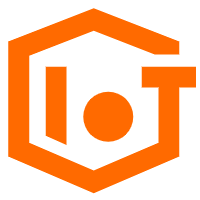 IoT Platform
IoT Platform
Provides secure and reliable communication between devices and the IoT Platform which allows you to manage a large number of devices on a single IoT Platform.
Learn More IoT Solution
IoT Solution
A cloud solution for smart technology providers to quickly build stable, cost-efficient, and reliable ubiquitous platforms
Learn More Global Internet Access Solution
Global Internet Access Solution
Migrate your Internet Data Center’s (IDC) Internet gateway to the cloud securely through Alibaba Cloud’s high-quality Internet bandwidth and premium Mainland China route.
Learn More Offline Visual Intelligence Software Packages
Offline Visual Intelligence Software Packages
Offline SDKs for visual production, such as image segmentation, video segmentation, and character recognition, based on deep learning technologies developed by Alibaba Cloud.
Learn MoreMore Posts by Alibaba Clouder